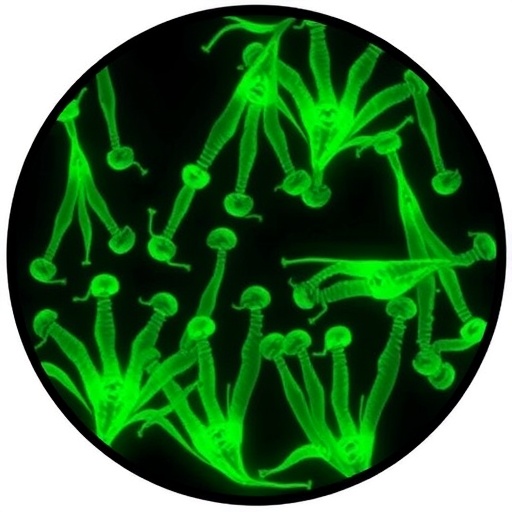In the rapidly advancing field of biomedical research, there has emerged a promising avenue of exploration focused on ferroptosis—a regulated form of cell death that plays a pivotal role in various pathologies, including neurodegenerative diseases, cancer, and, notably, retinal degeneration. Recent studies have unveiled that inhibiting this pathway could offer significant therapeutic benefits, particularly for conditions affecting the retina. One such study, led by Shen et al., has made notable strides in understanding ferroptosis’s implications for retinal health, emphasizing its potential as a target for innovative treatments.
Ferroptosis is characterized by an iron-dependent accumulation of lipid peroxides to lethal levels, resulting in unique cellular and metabolic features. This process diverges markedly from apoptotic pathways, prompting researchers to investigate the mechanistic underpinnings of ferroptosis and its relation to retinal pigment epithelium (RPE) cell survival. The RPE serves a crucial role in supporting photoreceptors and maintaining the integrity of the outer blood-retinal barrier. When exposed to stressors, such as all-trans retinal, RPE cells can undergo ferroptotic cell death, contributing to degenerative diseases like retinitis pigmentosa and age-related macular degeneration (AMD).
In their landmark article published in the Journal of Translational Medicine, Shen and colleagues explore the therapeutic potential of Ferrostatin-1, a specific ferroptosis inhibitor known for its capacity to mitigate oxidative stress. The study harnesses an animal model of retinal degeneration to scrutinize the effects of Ferrostatin-1 on RPE cells under hyperoxic conditions mimicking those seen in certain retinal diseases. The rationale behind utilizing this compound lies in its ability to modulate the accumulation of peroxides, ultimately protecting cells from ferroptotic death and reinstating cellular function.
The experimental design included systematic exposure of murine models to elevated all-trans retinal levels, which typically induces oxidative stress and ferroptosis in RPE cells. Treating these models with Ferrostatin-1 revealed a marked reduction in cell death and preservation of RPE morphology, signifying the compound’s protective qualities. Interestingly, the enhancement of mitochondrial function following treatment indicated that Ferrostatin-1 may also bolster cellular metabolic processes, offering a dual benefit to RPE cell functionality.
A pivotal component of the research was the assessment of visual function, utilizing electroretinograms to evaluate the impact of Ferrostatin-1 therapy on retinal signaling pathways. The data acquired illustrated a significant preservation of photoreceptor responses, underscoring the compound’s efficacy in safeguarding vision against degenerative alterations induced by oxidative stress. This finding is particularly noteworthy, as it suggests that targeting ferroptosis could translate into viable therapeutic strategies for patients suffering from retinal degeneration.
In addition to the immediate morphological and functional improvements, the long-term implications of leveraging ferroptosis inhibitors like Ferrostatin-1 are vast. As the field of retinal health grapples with the multifaceted challenges posed by age-related and hereditary disorders, the introduction of agents capable of impeding ferroptosis opens new avenues for clinical interventions. Future research could expand on these findings, potentially leading to the development of combination therapies that not only address oxidative stress but also target other deleterious pathways implicated in retinal degeneration.
Moreover, the mechanisms by which Ferrostatin-1 exerts its protective effects warrant further investigation. The study’s authors speculated that this compound might also influence other signaling cascades related to inflammation, given that ferroptosis is intricately linked to various inflammatory processes. Understanding these interactions will be crucial for optimizing treatment regimens and ensuring patient safety, particularly as new therapies emerge from preclinical and clinical settings.
As a whole, the work presented by Shen et al. exemplifies a growing recognition of the potential role ferroptosis inhibitors could play in the landscape of ophthalmology. By augmenting our understanding of cellular death pathways, researchers are paving the way for novel therapeutic strategies that address not only the symptoms but the underlying causes of retinal degeneration. Their findings herald a new era in retinal research, where targeted interventions could restore not just visual health, but improve the quality of life for countless individuals facing the looming specter of vision loss.
In conclusion, the efficacy of Ferrostatin-1 as a compelling candidate for addressing oxidative stress-induced RPE degeneration highlights the promising future of ferroptosis research and its clinical applicability. As investigations continue, the scientific community stands on the brink of significant breakthroughs that may redefine therapeutic paradigms in retinal medicine, bridging the gap between basic research and clinical practice. The excitement surrounding these advancements is palpable, and it is imperative for ongoing research to harness this momentum to translate findings into tangible patient benefits in the near future.
The quest to unveil the complexities of ferroptosis and its impact on retinal health is emblematic of a larger narrative within biological research, reflecting the willingness of scientists to tackle challenging problems head-on. The insights gained from the work of Shen et al. offer a window into the unexplored potential embedded within this death pathway, promising a transformative effect on how we approach retinal diseases. As new generations of researchers mobilize to delve deeper into this field, the collective efforts could very well culminate in revolutionary treatment modalities that fundamentally alter the landscape of retinal health and disease management.
Moving forward, the implications of this research extend beyond the confines of retinal health. The principles learned from studying ferroptosis could potentially be extrapolated to other organ systems and diseases characterized by oxidative stress and aberrant cell death. The universality of these findings is a testament to the interconnectedness of biological systems, with ferroptosis occupying a crucial intersection in our understanding of cell survival and death across numerous contexts, including cancer biology and neurodegenerative disorders.
As the dialogue between basic science and clinical application evolves, it is essential for stakeholders in the scientific community to remain collaborative and forward-thinking. Multi-disciplinary approaches that incorporate insights from genetics, pharmacology, and systems biology will be requisite in unraveling the complexities of ferroptosis and leveraging this knowledge for therapeutic development. Ultimately, the work of Shen et al. is not merely a study but a call to arms for scientists and clinicians alike to forge ahead with research that could significantly enhance human health and longevity.
Subject of Research: Ferroptosis Inhibition in Retinal Degeneration
Article Title: Ferrostatin-1, a ferroptosis inhibitor, mitigates all-trans-retinal-induced retinal pigment epithelium degeneration in mice.
Article References:
Shen, X., Chen, Y., He, B. et al. Ferrostatin-1, a ferroptosis inhibitor, mitigates all-trans-retinal-induced retinal pigment epithelium degeneration in mice.
J Transl Med 23, 1103 (2025). https://doi.org/10.1186/s12967-025-07195-7
Image Credits: AI Generated
DOI: 10.1186/s12967-025-07195-7
Keywords: Ferroptosis, retinal degeneration, Ferrostatin-1, oxidative stress, retinal pigment epithelium.
Tags: age-related macular degeneration researchbiomedical research advancementscell death regulation in neurobiologyferroptosis in retinal degenerationinnovative treatments for eye diseasesiron-dependent cell death mechanismsJournal of Translational Medicine studieslipid peroxidation in retinal healthneurodegenerative disease treatmentsretinal pigment epithelium cell survivalretinitis pigmentosa therapiestherapeutic potential of Ferrostatin-1





